Focus like a laser, not a flashlight - Michael Jordan
Greetings, fellow Bohron
A laser is a device that emits a narrow and focused beam of radiation. The term LASER is short for Light Amplification by Stimulated Emission of Radiation. Laser light differs greatly in its properties from ordinary light-emitting sources like incandescent light bulbs.
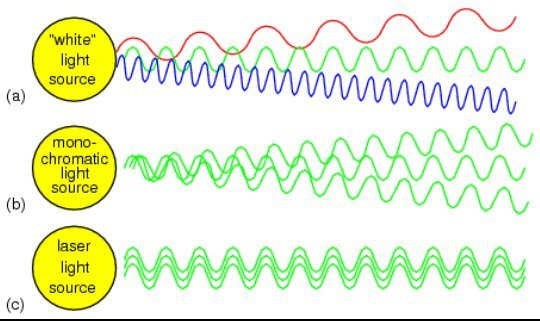
This cutting-edge technology is present all around us inside laser printers, barcode scanners, fibre optic cables and CD players. Because of the enormous amount of energy that can be plugged into a focused beam of radiation, lasers are employed for a wide variety of applications like cutting, welding, blasting, eye surgery, tattoo removal and missile defence systems.

Development
Starting from Albert Einstein’s idea of stimulated emission in 1917, the dream of developing a device that could emit a monochromatic, coherent beam of radiation became a reality after 4 decades of detailed research by numerous physicists around the world.
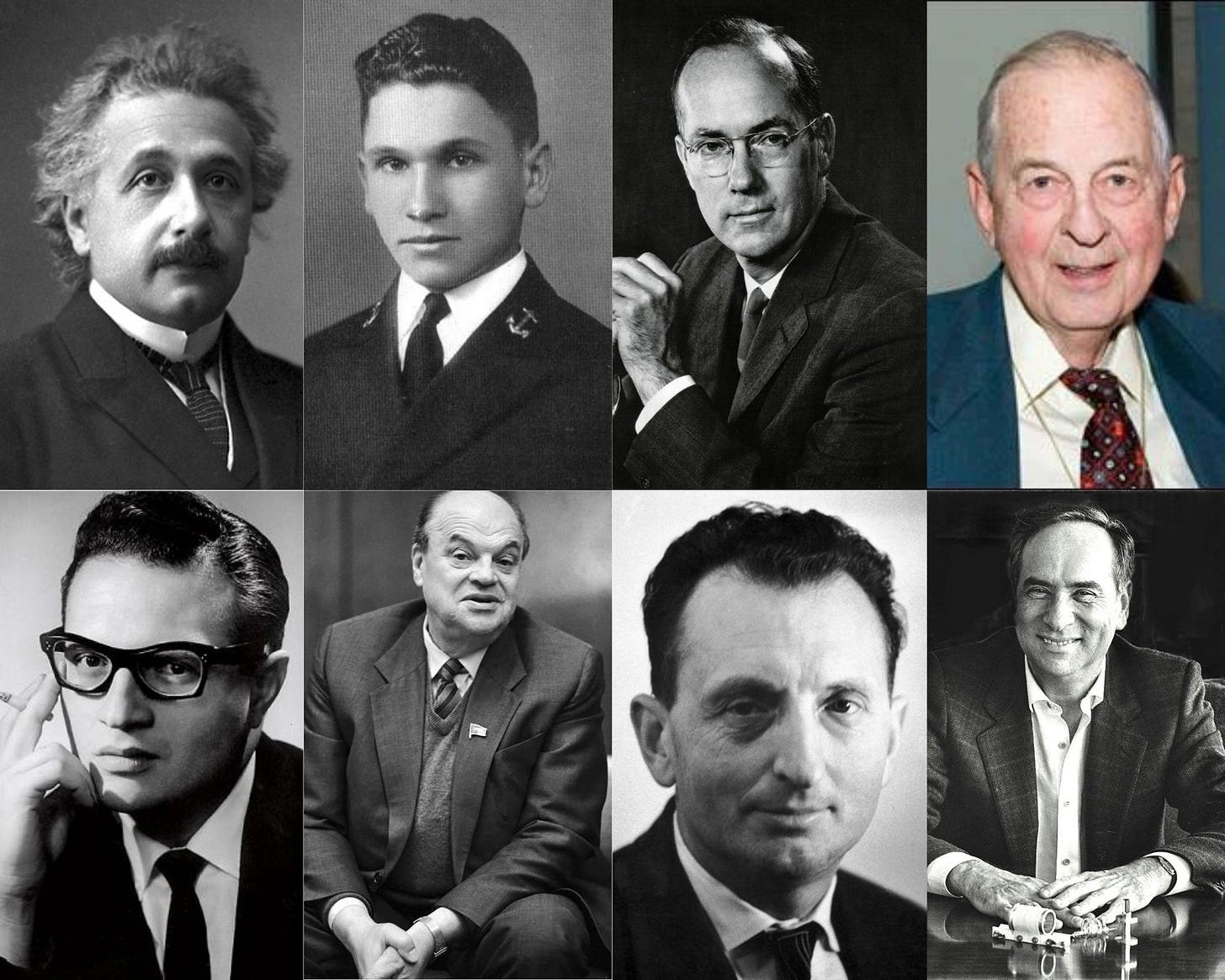
The first-ever coherent beam of electromagnetic radiation was produced using an ammonia maser(microwave counterpart of laser) developed by Charles Townes, James Gordon and Herbert Zeiger in 1953 at Columbia University.
On 16 May 1960, American physicist Theodore Maiman operated the first-ever laser at Hughes Research Laboratories in California. It consisted of a ruby cylinder with its ends silver-coated to make them reflected. Photographic flashlamps were used as the pumping source.

Physics of Lasers
Before you can understand its functioning, it is better to know about two terms used frequently in optics:
Monochromatic: A beam of visible light is said to be monochromatic if it consists of a single colour or frequency.

Coherent: Two waves are said to be coherent if they are in phase with each other and have the same frequency.

Lasers require two things to function: a lasing medium and a pumping source. The laser beam is transmitted using a laser medium such as gas, crystal or diode. Then energy is pumped into the medium from outside using a pumping source like electricity or chemical reaction. This excites the atoms in the lasing medium and electrons absorb energy to jump to outer electron shells.
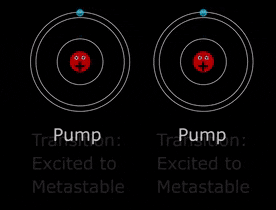
If more photons are incident on these unstable excited atoms, they cause the atoms to decay down to lower energy states with the release of more photons.
If two mirrors are placed at the ends of the laser tube, these photons do not escape quickly. They bounce back and forth and cause further stimulated emission in other atoms of the lasing medium, hence producing an avalanche of monochromatic and coherent photons in the process. This creates a very narrow beam of laser light that diverges hardly at all.
Classification
Depending upon the lasing medium and ways of pumping energy into the medium, lasers are classified as follows:
Gas Laser
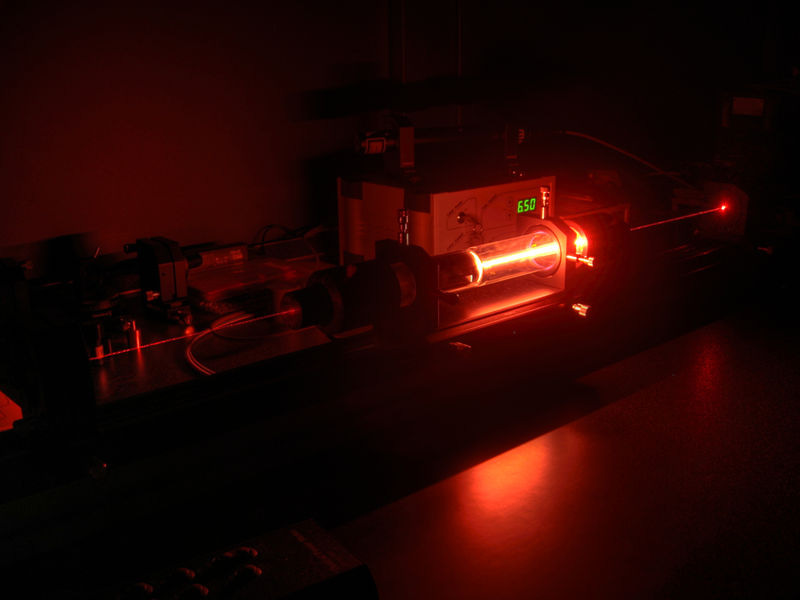
Lasing Medium: Gases like helium and neon or carbon dioxide
Pumping Source: Radio waves or electricity
They are weak lasers and produce red beams. CO₂ lasers, however, are powerful and can be used for welding and cutting purposes. He-Ne lasers are the most common gas lasers.
Chemical Laser
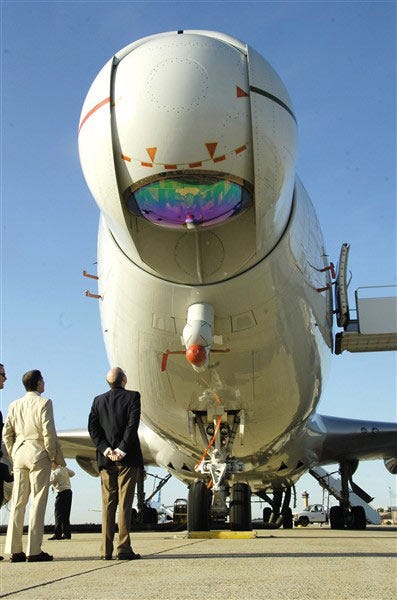
Lasing Medium: Gas
Pumping Source: Chemical Reaction
They are powerful lasers capable of can generating megawatts of power. They have been utilized in military applications like shooting down short-range missiles. Examples include deuterium fluoride and hydrogen fluoride lasers.
Solid-State Laser(SSL)
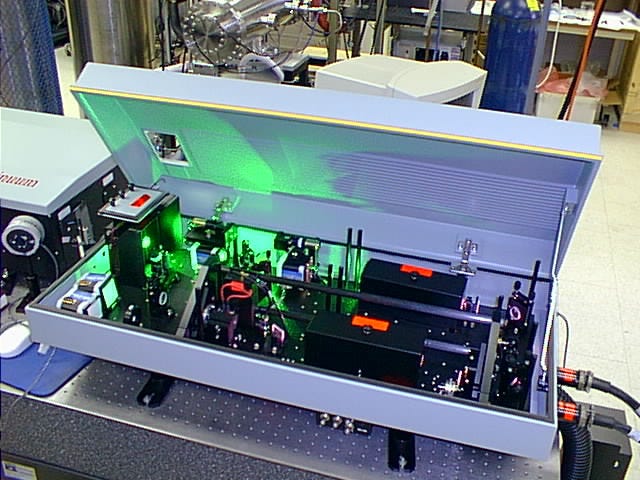
Lasing Medium: Glass or crystals with added impurity atoms
Pumping Source: Flashlamps or diode laser
The first laser consisted of a ruby crystal. SSLs produce high energy ultrashort pulses of laser light. They are used in eye surgery, metal processing, laser printers and as optical weapons in F-35 jets. In Nd:YAG laser, the host material yttrium aluminium garnet (YAG) is doped with a tiny fraction of neodymium.
Semiconductor lasers, excimer lasers and dye lasers are other prominently used lasers.
When laser first came out in 1960, Maiman dubbed his invention as “a solution seeking a problem" because, at that time, very few of its applications were known. Science fiction popularized these devices when they were featured as death stars and ray guns in Star Wars and everyone wondered if such a destructive technology could become a reality in future. We will find this out next time.
Sources:
Physics of the Impossible, Michio Kaku
Concepts of Modern Physics, Arthur Beiser




Great👍🏻
Great👍🏻